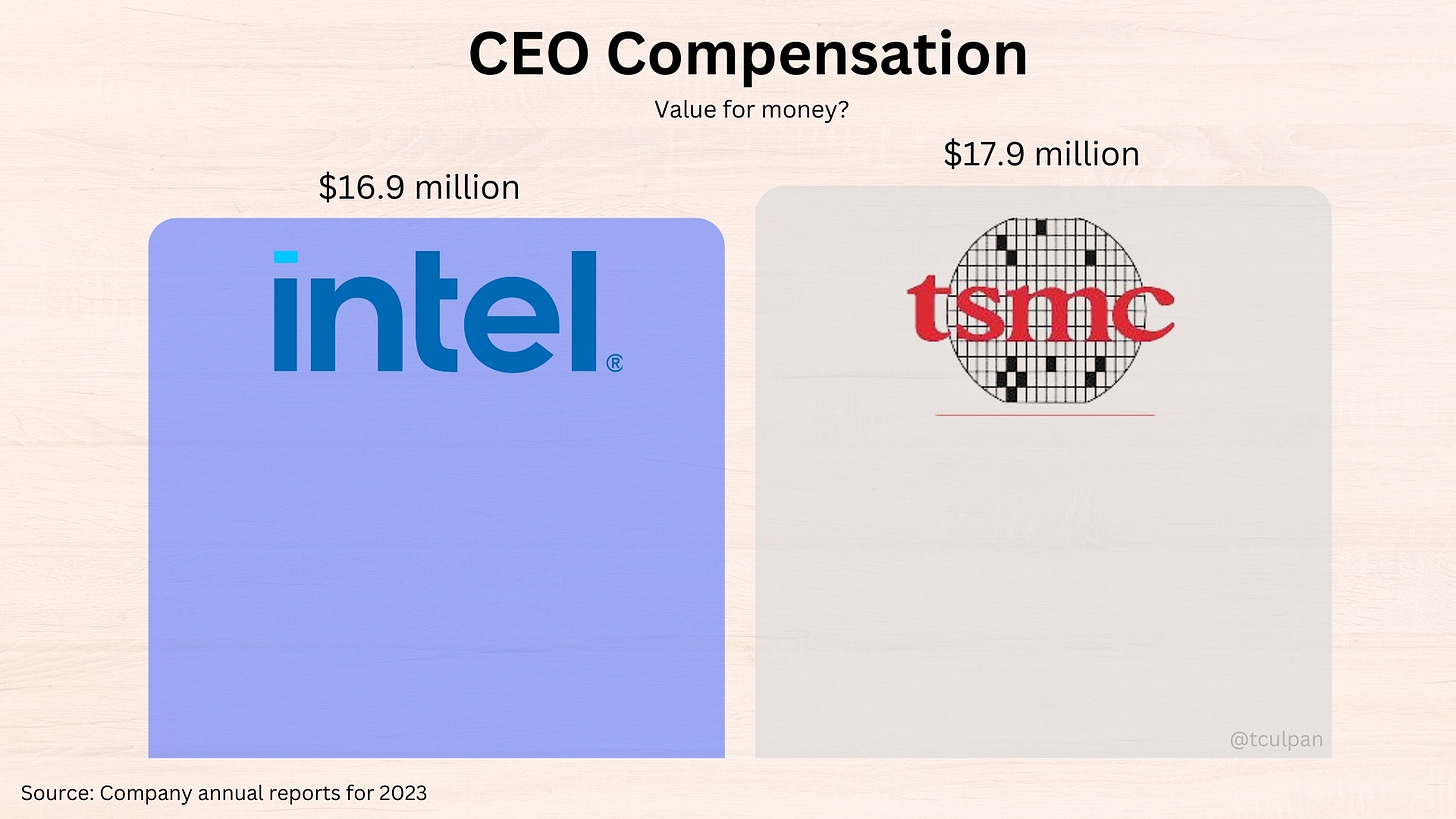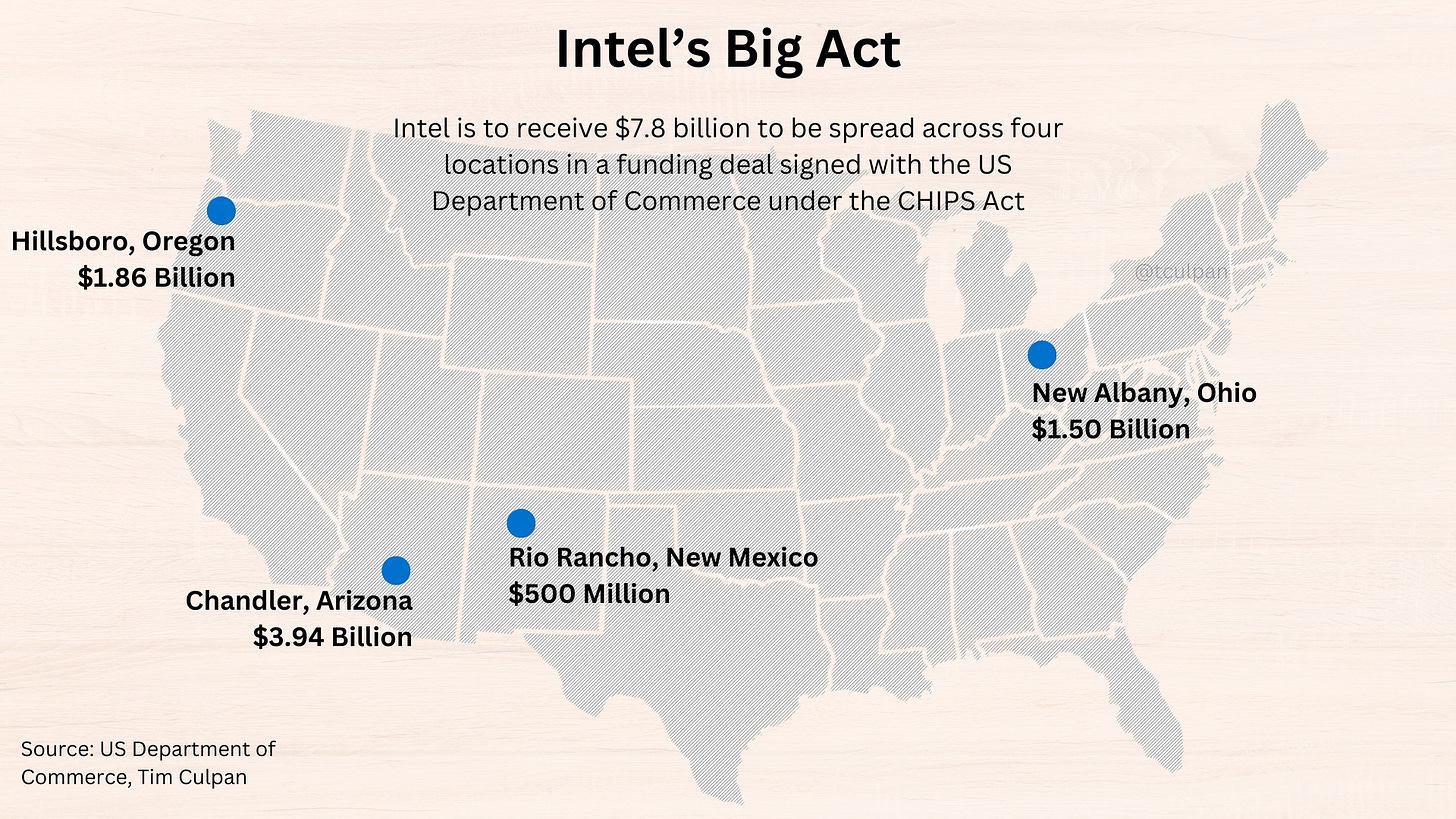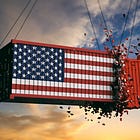Good Evening from Taipei,
The mood was electric. When Pat Gelsinger returned to Intel in February 2021 staff across the globe were overjoyed. Many remembered working for him more than a dozen years earlier, and the rest just seemed to catch that Pat fever.
They all knew that Intel had lost its way in both product strategy and manufacturing — it missed the smartphone boom and surrendered the lead in process technology. Gelsinger’s return and the blank check he was given by Intel’s Board was one last Hail Mary.
Today, thousands of those who applauded his return are unemployed, victims of deep cuts Gelsinger wrought amid a wayward attempt to return America’s seminal chipmaker to former glory. Along the way he made bold promises which increasingly look broken, and collected a compensation package to make even the most ardent capitalist blush.
Securing US taxpayer funding was the opening act of Gelsinger’s time at the top, and it was the final act, too.
From the moment he stepped into the role, Gelsinger was begging the US government for money, painting superior rival TSMC as an unacceptable risk to national security, and pledging to make American chips great again. In between, he launched his signature Five Nodes in Four Years program aimed at catching up. The four years don’t expire until July 2025, so the jury is still out. But with Intel forced to send its best designs to Hsinchu, Taiwan-based TSMC, you’d be hard pressed to say he won his case.
The Board agreed. Media outlets, including Reuters and Bloomberg, reported that Gelsinger was given the choice to jump or get pushed after losing confidence in his turnaround plan. It seems they were waiting for the CEO to wrap up a funding deal with the Department of Commerce before making him walk the plank.
I wasn’t surprised by Gelsinger’s sudden departure.
That’s not because I have deep contacts at the company or its board — I don’t. My lack of surprise stems from the fact that just hours before the announcement on Monday, I happened to be reading through last week’s 8-K filing about Intel’s CHIPS Act deal. The details had me flabbergasted. Gelsinger’s departure solidified my view, and since it’s so topical I decided to publish a day early instead of my usual Wednesday post.
One of the most-read pieces I’ve written is a two-part investigation published in October about the split between AMD design and foundry in 2009. If you recall, I started off my research thinking AMD carving out GlobalFoundries would be the model for Intel to follow. The opposite was true. In Part I, I analyzed why the deal was bad for the remaining part of AMD (design) and in Part II I walked through my thesis that AMD shareholders got screwed over.
In less than 800 words, Intel last week showed shareholders that it made some of the same mistakes that AMD made 15 years ago. The headlines shouted that the US chipmaker was awarded $7.8 billion — a haircut from the original $8.5 billion announced earlier. But the details of its Direct Funding Agreement with Commerce show that Intel and its board did not learn from the AMD saga.
To get the money, Intel is required to spend at least $35 billion in R&D on US soil in the five years through 2028. This should be easy, it spent more than $16 billion worldwide last year alone — the US provision is worth noting because the company has R&D centers across the globe. More concerning is that funding is contingent on “continued wafer purchases by Intel from Intel Foundry Corporation,” while the Board needs to ensure Intel maintains control of Intel Foundry.
The ownership and control caveats limit the Board’s wiggle room when it comes to negotiating a spin off and sale, which removes much of the flexibility it will eventually need to effect a sale of Intel Foundry.
But it’s the minimum wafer-purchase requirements which could kill Intel design without the funding noticeably helping Intel Foundry. Successive Wafer Supply Agreements with GlobalFoundries shackled AMD for over a decade, driving it into annual losses, causing it to delay products, and shed revenue.
Intel didn’t specify the wafer purchase amounts needed under its deal with Commerce. But what’s important to realize is that this acts as a floor. Whatever deal Intel makes with a spun off Intel Foundry will be at least as restrictive, and likely even more limiting to the design business. It won’t be able to run off to TSMC to fulfill its orders.
That wouldn’t be a problem had Intel Foundry been up to the task. But Gelsinger’s departure is proof that it’s not. If the manufacturing business was offering world-beating technology at a competitive yield and scale, then the company wouldn’t have lost a record $16.6 billion last quarter and Gelsinger would be Moses leading his people to the promised land.
They’re still stuck in the desert.
And the problem isn’t money, which is why CHIPS Act funding won’t help. Intel had $23 billion in cash, equivalents, and short-term assets at the end of September — $7.8 billion doled out over five years will barely move the needle. Moreover, Beijing has thrown over $200 billion at its chip sector in the past two decades and China hasn’t caught up, while Samsung’s $76 billion of liquidity didn’t prevent the Korean giant dropping the ball on process technology this year.
TSMC’s early teething problems in Arizona, and how it fixed them to bring top-notch process technology to the US to make iPhone chips and AMD high-performance processors indicates that Hsinchu Magic may be a more powerful ingredient than cash.
I predict that Intel will not get all of the money allocated to it. In fact, it would be logical for the next CEO to just bury the CHIPS Act funding deal and not be handcuffed by its requirements. Unfortunately, missing any of the milestones would undermine customer, public, and government confidence in Intel at a time when the faith of the people is about all it has left.
The Board’s choice of next CEO will be a tough one. Tan Lip-Bu is an obvious name to consider. The former chief of semiconductor software maker Cadence Design was on the board until he quit earlier this year over disagreements about Intel’s direction. Mark Gurman likes Johny Srouji for the short list. The current chief of Apple’s Hardware division, which includes chips, was interviewed for the job five years ago before Gelsinger was chosen.
Neither is the perfect fit.
Intel desperately needs an executive with actual experience to bring discipline, focus, and results to chipmaking, because that’s the part which will make or break both design and Foundry.
The Magic
There are only three people on the planet who have a 360-degree 3D view of what exactly it takes to become, and remain, the world’s best chip manufacturer. Their names are Morris Chang, CC Wei, and Mark Liu. Chang is the 93-year-old founder of TSMC who just published the second part of his autobiography this month. Wei is the current chairman and CEO of TSMC — he already has a job.
Then there’s Mark Liu. An American citizen, Liu rose up the ranks of TSMC to be the first Chairman in the post-Chang era. He resigned this year, leaving Wei alone at the top with both roles.
It’s very unlikely he would take the job, and could spark a Jobsian thermonuclear war if attempted. Nevertheless, Intel’s Board ought to invite Mark Liu in for a chat, if for no other reason than to ask one simple question: “What would you do if you were us?”
“Come to Hsinchu,” I suspect he might say. “See the magic for yourself.”
Thanks for reading.
More Items for You to Peruse:












Maybe they could poach SMIC's Liang Mong Song for his third defection, after TSMC and Samsung ;)
After seeing the amount the CHIPS Act would have mandated- $35B in R&D, all I would ask is that they commercialize their solar-powerable Claremont (the 32nm Pentium from 2011), and restart their Quark line with more L1 cache and a DDR bus <64MB.
I believe Liang Mong Song of SMIC can be up for the job too